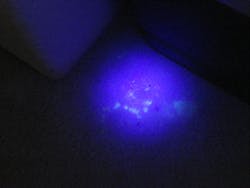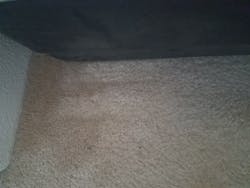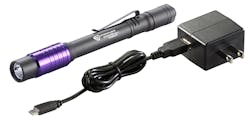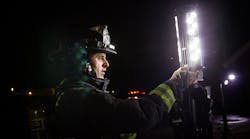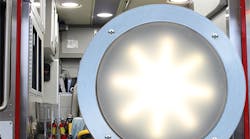This type of science and lighting was first used by the Royal Canadian Mounted Police in the 1970s. Though the technology was somewhat advanced for that decade, the equipment of the time was not exactly user or scene friendly. This science involved large, costly machines that utilized argon-ion lasers. It was not until the 1980s and 90s that the science of using and measuring wavelengths was implemented and technology was drastically changed. Newer devices did more with less equipment and these attributes are still developing today.
Let’s back track a little about the significance of using alternative light sources (ALS) in investigations. The human eye can only see so much when it comes to evidence of the serology and biological categories. It is for this very reason that we use alternative light source devices. The term “fluorescence” may be used to describe the reaction or result of an ALS light. Fluorescence is the emission of wavelengths of light that are long and reveals the wavelength that has been shortened due to the substance or surface and how much as been absorbed. In other words certain organic substances fluoresce under special lighting. Likewise, if particular chemicals or additives are brought into the picture such as fingerprint powder, Luminol, then that can enhance the glowing reaction to make it more visible to the eye (but that is an entirely different article topic).In the world of investigation, these particular light sources are used to enhance the image of a substance on a surface that may potentially contain evidence. For example, the scene where a sexual assault has taken place and there may be biological evidence that the eye can’t see at first would be the ideal time to use ALS or UV light. Using an alternative light source or a UV light would bring up those stains which should then be photographed and swabbed for the presence of potential DNA. When using an alternative light source device, barrier or filters of varying colors must be implemented. In the crime scene setting the majority of the time you can detect certain substances anywhere from the 400 to 550 wavelength range. In regard to filters, this would mean using an ultraviolet light source like a black light which uses electromagnetic light-or a violet, blue, green, yellow, or orange filter. (on the ALS or a camera)
Aside from the standard wavelength devices that require investigators to wear orange goggles in order to see what the light and wavelengths detect, there are other, smaller options such as Sirchie’s Bluemaxx light. This consists of a rechargeable flashlight that is around 1082 lumens, and comes equipped with an orange barrier. This is an easy way to utilize this science in those situations where the entire, larger device may not be necessary. You can also take photos well with this since you can hold the flashlight with the barrier with one hand, and your camera with the other. The Bluemaxx light is a great option when it comes to ALS since it’s not too large and it’s easy to use.
One of the newer options out there that only came about within the last few years are tablets with the same type of technology but in a software program instead. The Mobile Multispectral Forensic Tablet , from Forenscope, takes the technology of an alternative light source to the next level for crime scene investigators and detectives. Normally you must use an ALS light and a camera or a camera with a filter on the lens that would offer the same potential reaction to a surface you are shining an ALS or UV light on. With the Mobile Multispectral Forensic Tablet you can view evidence and the “hidden” substances, and take photos just by simply using the one device. It can detect blood, gunshot residue and other bodily fluids and organic materials. This way you can detect and document all at the same time. Once that photo is taken you can also refer to it instantly in order to see what areas of that surface may have evidence that must be collected. Combining all of these tools into one handy device is an outstanding option.
This technology is even available in smaller units such as a smartphone. Forenscope has the CSI Pro Smartphone, which is much more than just a phone. It includes a camera with multispectral capabilities and UV options with an orange filter system. It also comes equipped with a photo scale and other UV light filter options. The filters will allow the substance to be even more visible and will help enhance the photo.The more convenient these devices are, the more prevalent their use will be on a scene. Though they technically should be used at almost all crime scenes, often these types of devices are only used in major circumstances. Streamlight makes a stylus style pen that is a UV light called the Stylus UV Light. It is low in power but still effective and easy to keep in your pocket. This type of alternative light source would be great to practice with too so you are prepared for those times you may encounter a scene which would require a UV light.
Another way this technology may be helpful is to find bruising or other impressions on skin that may be invisible to the naked eye. Cases such as abuse cases or an aggravated battery may benefit from using alternative light sources when photographing victims.
For courtroom purposes this is also a plus. When good photos are taken, the photo can be shown in court as proof of evidence as well as proof of where the evidence collected at the scene was located. This helps put the scene, evidence and story into a tangible perspective for the jurors.

